Willy Martinez's Blog, page 44
February 17, 2023
The Fable, Poem by Ivory Winters
BY YVOR WINTERS
Beyond the steady rock the steady sea,
In movement more immovable than station,
Gathers and washes and is gone. It comes,
A slow obscure metonymy of motion,
Crumbling the inner barriers of the brain.
But the crossed rock braces the hills and makes
A steady quiet of the steady music,
Massive with peace.
And listen, now:
The foam receding down the sand silvers
Between the grains, thin, pure as virgin words,
Lending a sheen to Nothing, whispering.
Yvor Winters, “The Fable” from The Collected Poems of Yvor Winters. Used by permission of Ohio University Press, Athens, Ohio.
Source: The Collected Poems of Yvor Winters (1960)
Original image for header by Daniel Gregoire on Unsplash
FacebookTwitterInstagramLinkedInGoodreadsFebruary 14, 2023
How To Celebrate Library Lovers Month Without Being Too Nerdy

Library Lovers Month is the perfect time for bookworms and bibliophiles alike to celebrate their love of books and libraries. From book clubs and book drives to story times and silent reading events, there are plenty of activities to take part in. Here are some of the best ways to show your appreciation for libraries during Library Lovers Month.
Read a ClassicThere’s no better way to celebrate Library Lovers Month than to pick up a classic work of literature. Start with beloved classics like Little Women, Pride and Prejudice, or To Kill a Mockingbird then explore lesser-known books like Frankenstein, Jane Eyre, or Wuthering Heights. Not sure where to start? Visit your local library to find out what’s on their reading list, or check out the classic bestseller lists on Amazon and Goodreads.
Join a Book ClubReading a book on your own can be a rewarding experience, but discussing the story and its characters with other people can be even more enjoyable. Joining a local book club is a great way to get to know new people who share your passion for reading. Your local library is an excellent place to find book clubs, so be sure to check their website or ask a librarian for more information.
Take Part in a Story Time to Celebrate Library Lovers MonthNothing beats the magic of a story being read aloud by a librarian or professional storyteller. Many libraries host story times for children, but you can also find story times for adults as well. These readings are often accompanied by activities, games, and crafts, making them a great way to get to know your library and the people who frequent it.
 Explore Your Local Library
Explore Your Local LibraryMost libraries have a wide range of services and activities that you may not even know about. Take the time to explore your local library and find out what it has to offer. You may find lectures, workshops, and even music performances. Your local library may also have a cafe and comfortable seating areas, making it a great place to spend a quiet afternoon.
Do I Attend a Silent Reading Event to Celebrate?Sometimes all you need to celebrate is a good book and a few hours of silence. That’s where silent reading events come in. These events are a great way to get away from the hustle and bustle of everyday life and just enjoy a good book.
Wishing you all a Happy Library Lovers Month!
Reading is always cool  Show some love for libraries this month! #LibraryLoversMonth #booknerd #libraries #librarian #amreading #read #books
Show some love for libraries this month! #LibraryLoversMonth #booknerd #libraries #librarian #amreading #read #books
OK
We promise not to spam you or share your information with unwanted users. You may unsubscribe at any time.
Processing… Success! You're on the list. Whoops! There was an error and we couldn't process your subscription. Please reload the page and try again.February 13, 2023
Flash Fiction: In League
 Professional Stringer of Words
Professional Stringer of Words
 AI art from the Wombo app
AI art from the Wombo appThe presence of the mandrake was getting to him, he thought, the poison perhaps seeping into the groundwater. That would explain all of it, the whispers, the dreams.
Uncertain if the feathered shadows in the sky were real, uncertain of anything anymore, Oswald raised his rifle to aim at them.
And what would the neighbors think if they heard gunshots? He was not a violent man, not prone to hunting, but he couldn’t take this anymore. That’s what he would tell them.
He pulled the trigger. His shots cracked open the sky. One falling shadow, two. Still, the feathered beasts sprinkled their cargo, bits of root and dark specks, seeds to spread the poison menace across his land.
And the mandrake at his feet, lush and wild, awaited its gifts.
Oswald reloaded. He moved to take a step, but a bundle of leaves tangled…
View original post 134 more words
February 11, 2023
Exploring the Most Romantic Valentine’s Day Quotes in Literature
Ah, love. The elusive and ephemeral chemical experience that all humans want and crave. It’s so powerful that it can be hard to describe. It’s no wonder then that the topic may seem daunting for that very reason—and in particular, the expression of it. Let’s face it: you don’t want to trip over your words when you’re trying to convey to someone just how much affection you have for them.
But what better time than Valentine’s Day to make an attempt at a grand gesture and expression of affection to the apple of your eye (whether that’s him, her or maybe just yourself.)? Challenging as it may be, the task becomes much easier if you look to the love letters and sayings of some of the most famous writers, actors, and even philosophers from history. After all, they made names for themselves emoting and putting into words what most of us can’t.
8 Great Valentine’s Day quotes from Literary Classics
Valentine’s Day is full of romantic love affairs, and there’s nothing more sentimental than quotes from our favorite literary classics. From Shakespeare to Austen, here are three of the most romantic literature quotes to warm your heart on this special day! Each of these quotes has been carefully selected to capture the true spirit of love. So let us take a moment to appreciate the brilliance of these timeless romantic quotations in literature.
“Whatever our souls are made of, his and mine are the same.” –Emily Brontë in Wuthering Heights
“It is a curious thought, but it is only when you see people looking ridiculous that you realize just how much you love them.” –Agatha Christie
“The greatest happiness of life is the conviction that we are loved; loved for ourselves, or rather, loved in spite of ourselves.” –Victor Hugo in Les Miserables.
“In love there are two things– bodies and words.” –Joyce Carol Oates. Read Night. Sleep. Death. The Stars
“There is always madness in love. But there is also always some reason in madness.” –Friedrich Nietzsche
“Have enough courage to trust love one more time and always one more time.” –Maya Angelou
“I love her and it is the beginning of everything.” –F. Scott Fitzgerald
“There is nothing I would not do for those who are really my friends. I have no notion of loving people by halves; it is not my nature.” — Jane Austen in The Northanger Abbey.
FacebookTwitterInstagramLinkedInGoodreadsExploring the Hidden Meanings Behind Each Quote to Feel Closer to Your Loved One
Looking into literary symbols that portray the meaning of love can help us get closer to our loved ones. By understanding the hidden meanings, metaphors, and historical references tied to famous quotes about love, we can come to understand our beloved a little better.
Learning more about love’s heritage through literature can reveal deeper truths and illuminate universal messages of human experience. From Greek tragedies to Romantic sonnets, various forms of writing throughout history have been used to explore the significance of love.
Thank you for visiting with us. For more poetry or Literature related content, visit our blog at The Ritual. Written by Willy Martinez, originally for the Twitter community.
Let’s Read!
We promise not to spam you or share your information with unwanted users. You may unsubscribe at any time.
Processing… Success! You're on the list. Whoops! There was an error and we couldn't process your subscription. Please reload the page and try again.Celebrating Black Voices: 17 Must-Reads for Black History Month
Black History Month is an important time to recognize and celebrate the contributions made by African Americans to society. It is a time for us to recognize the struggles and triumphs of black people throughout history, and to honor the legacy of those who have come before us.
This month serves as a reminder that we should continue to strive for equality and justice in our communities. Additionally, it is a time for us to celebrate black culture, art, music, literature, and more.
In celebration of Black History Month, we want to recognize the important contributions of African American authors and their works. We have compiled a list of 17 must-read books for celebrating black voices and history. These books range from classic works by famous black authors to more modern novels about racism and the African American experience.
Whether you’re looking for a classic or a more contemporary read, this list offers something for everyone to enjoy. From fiction to non-fiction, these books offer an insight into the struggles and triumphs of African Americans throughout history.
FacebookTwitterInstagramLinkedInGoodreadsCelebrating Black History Through Storytelling1. BELOVED – TONI MORRISON
Toni Morrison’s hugely influential, Pulitzer Prize–winning work — first published in 1987 — brought the wrenching experience of slavery into the literature of our modern times. Set in post–Civil War Ohio, it is the story of Sethe, an escaped slave who has lost a husband and buried a child; who has withstood savagery and not gone mad. But eighteen years after her escape, she is still not free. After being haunted for years by the ghost of her baby, who died namelessly and is referred to simply as Beloved, Sethe comes face to face with her terrible past in a very real and startling way.
Discover why The New York Times chose Beloved as the best American novel of the previous fifty years.
2. WE CAST A SHADOW – MAURICE CARLOS RUFFIN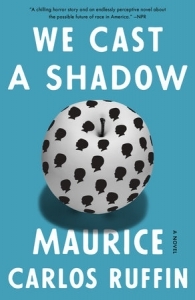
Fathers are willing to go to any lengths to keep their children safe. In the story, our protagonist is a father of a bi-racial son called Nigel, whose black birthmark is threatening his safety in a society where racism and segregation are rampant. Thus, he is faced with an impossible decision – what’s the best way to ensure his son’s protection in this environment? Does he risk the safety of his son in this dangerous society that devalues and dehumanizes him, or does he put Nigel through an experimental new medical procedure that promises to save lives by turning people white?
This gripping, hallucinatory novel is a sharp satire on surviving racism in America as well as a profoundly moving story of a father’s love and the sacrifices we willingly make to protect those who mean the most to us.
3. THE GOOD HOUSE – TANANARIVE DUE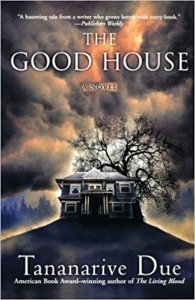
Alex Dolan’s debut novel has been categorized by Publishers Weekly as one of the most influential horror stories since the success of Stephen King. In this thrilling tale, a female protagonist looks for an ancestral power that might be able to protect her hometown from dark forces. Working to rebuild her law practice after her son commits suicide, Angela Toussaint journeys to the family home where the suicide took place, hoping for answers, and discovers an invisible, evil force that is driving locals to acts of violence. This excellent horror novel features characters with deep personalities and gripping, unpredictable storylines. Its eerie atmospheres add to the suspense it provides, creating an overall captivating experience.
As a bonus, you should definitely check out Tananarive Due on the essential documentary Horror Noire on Shudder to learn more about the history of Black horror.
4. BROWN GIRL IN THE RING – NALO HOPKINSON
Set in the wasteland future version of Toronto, the affluent have fled the city and barricaded the roads so that the poor and mostly people of color can’t get out. The dystopic Toronto setting paints a depressing picture as the wealthy flee, leaving minorities behind and stuck in the city. Roads out of the city are blocked off, making it difficult for these individuals to access better opportunities outside. With nowhere to turn, a young woman must open herself to ancient truths, eternal powers, and the tragic mystery surrounding her mother and grandmother.
A startlingly original story, Brown Girl in the Ring is an example of Caribbean magic realism. In his work, Hopkinson emphasizes the dangerous consequences of becoming blind to the suffering of others and disregarding human rights in pursuit of personal gain. He speaks out against inequality and illustrates how a lack of empathy can lead to incredibly destructive outcomes.
5. CRESCENDO: WELCOME HOME, DEATH AWAITS – L. MARIE WOOD
A man, haunted by a family curse, is taken beyond the limits of his sanity to a realm where he has no control over his actions or his fear. James Adams was living an ordinary life in a New York suburb until the demons inside him stirred, revealing horrifying secrets and predicting his future as his fate.
L. Marie Wood, one of the few African American female authors to foray into the horror genre, is proud to present her debut novel, Crescendo. She is part of an exclusive group that uses psychological suspense and horror to create captivating stories. It’s about fate and the lengths we will travel to avoid the inevitable. Set in tranquil Rockland County, New York, this tale of suspense and horror will take its reader on an emotional roller coaster of anger, anxiety, compassion, and indelible fear.
6. WHITE IS FOR WITCHING – HELEN OYEYEMI
There’s something strange about the Silver family house in the closed-off town of Dover, England, which has been home to four generations of Silver women. The Silver women have always had a strong connection, and when Lily, Miranda’s mother, passes away suddenly, Miranda begins suffering strange ailments. When she brings a friend home, Dover’s hostility toward outsiders physically manifests within the four walls of the Silver house, and the lives of everyone inside are irrevocably changed.
This spine-tingling Gothic tale about love and loss is also a powerful reflection on race and family legacies. White is for Witching is boldly original and absolutely terrifying. Thank you for visiting with us. For more Literature related content, visit our blog at The Ritual.
7. FLEDGLING – OCTAVIA E. BUTLER
Fledgling is the last novel written by the renowned Black writer Octavia Butler, winner of the MacArthur “Genius” Grant and PEN West Lifetime Achievement Award for her body of work. Butler received critical acclaim for her strong protagonists, social observations, and feminist novels that are even more relevant today than ever.
Fledgling is the story of an apparently young, amnesiac girl whose alarmingly un-human needs and abilities lead her to a startling conclusion: she is in fact a genetically modified, 53-year-old vampire. It’s a captivating novel that tests the limits of “otherness” and questions what it means to be truly human.
FacebookTwitterInstagramLinkedInGoodreadsOK
We promise not to spam you or share your information with unwanted users. You may unsubscribe at any time.
Processing… Success! You're on the list. Whoops! There was an error and we couldn't process your subscription. Please reload the page and try again. 8. LET’S PLAY WHITE – CHESYA BURKE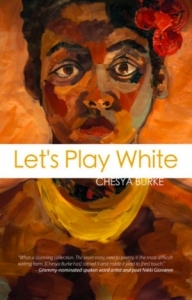
White brings with it dreams of respect, wealth, of simply being treated as a human being. It’s the one thing Walter will never be. But what if he could play white, the way so many others seem to do? Would it bring him privilege or simply deny the pain?
Let’s Play White is a horror anthology that explores how privilege, race, and power dictates Black people’s ability to survive. In each story, Chesya Burke asks what it’s like to escape into someone else’s skin. From the spectrum spanning despair and hope to the stark weave of personal struggles, Let’s Play White speaks with the voices of the overlooked and unheard.
9. WONDERLAND – JENNIFER HILLIER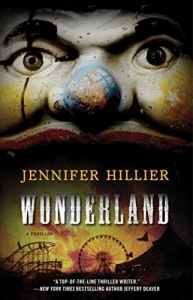
It’s only Vanessa Castro’s first day as deputy police chief of Seaside, and already bodies are dropping at Wonderland. By day, Wonderland may be a magical place boasting retro charm. But before daybreak, an eerie feeling descends. Maybe it’s the Clown Museum, home to creepy wax replicas of movie stars and a massive collection of antique porcelain dolls. Or maybe it’s the terrifyingly real House of Horrors.
Acclaimed author Jennifer Hillier’s edgy thriller is an insidiously creepy, fast-paced roller coaster ride that hurtles towards a shocking and bloody conclusion.
10. THE BALLAD OF BLACK TOM – VICTOR LAVALLE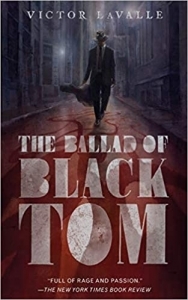
Charles Thomas Tester hustles to put food on the table and keep the roof over his father’s head, selling dangerous magic items to people desperate for magic. But when he delivers an occult tome to a reclusive sorceress in the heart of Queens, Tom opens a door to a deeper realm of magic and earns the attention of things best left sleeping.
This Lovecraftian horror novel is a retelling/alternate version of The Horror at Red Hook. It specifically plays off the racism in Lovecraft’s story (perhaps his most racist story). You don’t have to have read Lovecraft’s original to enjoy this one, but it definitely helps to appreciate the beauty of how skillfully LaValle flips that tale on its head.
FacebookTwitterInstagramLinkedInGoodreads11. WHO FEARS DEATH – NNEDI OKORAFOR
In post-apocalyptic Africa, the world has changed in many ways; yet in one region, genocide between tribes still bloodies the land. A woman who has survived the annihilation of her village and a terrible rape by an enemy general wanders into the desert and gives birth to an angry baby girl with hair and skin the color of sand. It doesn’t take long for the girl to understand that she is physically and socially marked by the circumstances of her conception. But even as a child, she manifests the beginnings of remarkable and unique magic. As she grows, so do her abilities, but she learns something terrifying: someone powerful is trying to kill her.
This World Fantasy Award-winning novel blends myth and magic with harsh and brutal reality. At times hard to read due to the depictions of savage violence, but it’s also balanced by great humanity. This book has been optioned for a TV series for HBO, with executive producer George R.R. Martin.
12. THE GILDA STORIES – JEWELLE GOMEZ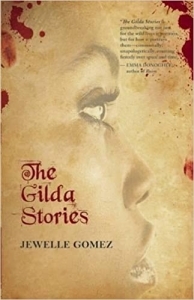
Author Jewelle Gomez is considered one of the foremothers of Afrofuturism. The Gilda Stories introduces the title character as a slave girl in Louisiana, in 1850. Some years later, she is made into a vampire. Each story relates to a segment of her long and fascinating life. With strong echoes of Interview with a Vampire, the narrative of Gilda’s life progresses over a 200-year trajectory, as Gomez brilliantly weaves together a series of narratives that are as poignant and thought-provoking as they are thoroughly entertaining.
Gomez also infused this vampire novel with a great deal of Black Feminist/lesbian perspective, making it the perfect companion to something like Carmilla. The Gilda Stories is also currently in TV development.
13. BABEL-17 – SAMUEL R. DELANY
Samuel R. Delany has opened doors for black writers in the genre, including Octavia Butler, whom he mentored. Delany’s 1967 Nebula Award-winning Babel-17 is a fascinating tale of Rydra Wong, a spaceship captain, who is intrigued by a mysterious language called Babel-17 that has the power to alter a person’s perception of themselves and others and possibly brainwash her to betray her government.
Babel-17 is all about the power of language, and it’s surprisingly fresh for a novel written in 1966. Lyrical and thought-provoking, it’s full of interesting ideas — a must-read for those passionate about linguistics and lovers of science fiction. The impact of this novel is made all the more remarkable when you consider that Delany was just 23 years old when he wrote it.
FacebookTwitterInstagramLinkedInGoodreads14. MINION – L.A. BANKS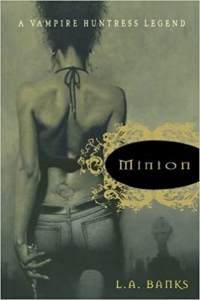
There is one woman who stands between us and the eternal night. All Damali Richards ever wanted to do was create music and bring it to the people. By day, she is a successful spoken word artist. But come nightfall, she hunts vampires and demons. After a series of brutal murders rocked the city, Damali realizes she is up against the most powerful vampire she’s ever met. Soon she finds herself being pulled deeper into the vast and horrifying vampire world.
L.A. Banks was a prolific, award-winning writer whose work spanned multiple genres. Her horror opus was The Vampire Huntress Legend Series — a twelve-book series centered around a young woman named Damali Richards, part of a long line of humans who are born once every thousand years to fight the Dark Realms. The entire series is based on the never-ending struggle between good and evil, religion and love. Start with the first book in the series, Minion, which is widely considered a classic. Thank you for visiting with us. For more Literature related content, visit our blog at The Ritual.
15. SMOKETOWN – TENEA D. JOHNSON
A generation ago, the city of Leiodare was overrun with a mysterious epidemic believed to have been spread by birds. Now, in the post-climate change in the United States, birds are outlawed. And what was once a crater in Appalachia is now a tropical, glittering metropolis where Anna Armour is waiting. Anna is a woman of special gifts. She has chosen this beautiful, traumatized city to wait for the woman she’s lost. When one night Anna creates life out of thin air and desperation, no one is prepared for what comes next.
Told through interlocking stories, Smoketown delves into the invisible connections that rival magic, and the cost of redemption. Johnson’s debut novel examines the relationship between art and society, blurring the boundaries between magic and science. Wildly imaginative and strange, it’s a post-apocalyptic novel with dreamy world-building. There’s a deep mystery at the heart of this novel that culminates in a breathless climax.
16. SLICE OF CHERRY – DIA REEVES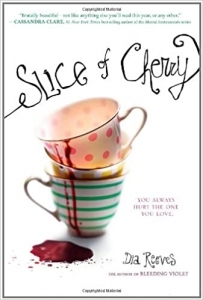
Kit and Fancy cordelles are sisters and best friends. The daughters of the infamous Bonesaw Killer, they are used to feeling like outsiders. Eventually, they start to give into their innate desire to kill, opting only to kill those who truly deserve it. But when Fancy stumbles upon a mysterious and invisible doorway to another world, she opens a door to endless possibilities.
Reeves’ deliciously demented tale is fast-moving, unpredictable, and extremely engrossing. Her debut novel, Bleeding Violet, was a sexy and gruesome paranormal tale. Her sophomore novel, Slice of Cherry, reads like a twisted childhood fantasy brought to life. Dark and disturbing, it’s definitely not for the faint of heart.
17. THE TEMPEST TALES – WALTER MOSLEY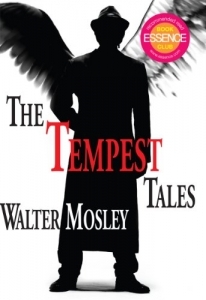
The Tempest Tales follows Thamest Landry, a black man who is killed by the police unjustly. He is denied access to heaven and, due to the racism faced in the world, decides to not go to hell either. He questions how he could be found guilty when so many people of color are subjected to discrimination across the world. Confounded, Saint Peter sends him back to Harlem, where a guiding angel tries to convince him to accept Saint Peter’s judgment and acknowledge his own guilt. Even the Devil himself tries to win over Tempest’s soul.
Mosley is famous for his crime fiction and historic mysteries. His horror novel ‘The Tempest Tales’ similar to the movie ‘Get Out’, questions our traditional assumptions of good & evil. Through the street-smart Landry, Mosley poses the provocative question: Is sin for blacks the same as it is for whites? And who gets to decide? In the wake of Black Lives Matter, it’s definitely a story of our times.
Believe what you may, but know that behind every great adventure story is a grain of truth, though that truth may come from somewhere completely surprising.
Thank you for visiting with us. For more Literature related content, visit our blog at The Ritual.
OK
We promise not to spam you or share your information with unwanted users. You may unsubscribe at any time.
Processing… Success! You're on the list. Whoops! There was an error and we couldn't process your subscription. Please reload the page and try again.February 10, 2023
Top Rated Library Movies You Can Check Out Now
For all the library-lovers out there, what better way to celebrate Library Lovers Month than by watching a movie about libraries? Nothing quite beats putting your feet up and pressing play on a classic. After all, what’s more romantic than snuggling up with your partner to watch a movie about dusty shelves filled with books? *eye roll* Well, if you’re looking for a real treat to mark the occasion, why not try one of these top-rated library movies:
The Imitation Game (2014)
This Academy Award-winning film stars Benedict Cumberbatch as Alan Turing and tells the story of his code-breaking activities during World War II.
Little Women (1994)
An adaptation of Louisa May Alcott’s classic novel about four sisters coming of age in Massachusetts during the Civil War.
Goodbye Christopher Robin (2017)
The heartwarming story of Winnie-the-Pooh creator A.A. Milne and his son, Christopher Robin.
The Book Thief (2013)
An emotionally powerful film about a young German girl who steals books in order to survive the horrors of World War II.
Night at the Museum (2006)
A hilarious adventure featuring Ben Stiller as a night guard at the American Museum of Natural History Library who must protect its artifacts from an evil Egyptian pharaoh.
So what are you waiting for? Pop some popcorn and get ready to watch a library movie about libraries – but only if you promise to keep it low-key and nerdy.
https://mindonfirebooks.wordpress.com/2019/08/12/monster-monday-the-grey-lady-of-willard-library/FacebookTwitterInstagramLinkedInGoodreadsPhoto by Lance Anderson on Unsplash

February 9, 2023
3 Mind-Bending Novels To Read For Black History Month
List Submitted by the Leading Edge.
Parable of the Sower, Octavia Butler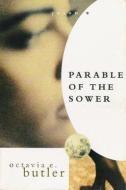
In this brilliant Young Adult novel by renowned author Octavia Butler, 18-year-old Lauren Olamina must navigate the treacherous landscape of 2025 California while grappling with a unique mental capacity called “hyperempathy,” which enables her to literally feel what those around her are feeling. (And in a time ripe with violence, her condition often feels like much more of a disability than an ability.)
There are, however, scenes of peace and spiritual enlightenment interspersed amidst the blood and carnage of Lauren’s world. Butler crafts a thought-provoking, comfort-shattering story of the future with a sturdy, authoritative protagonist at the helm.
The Lesson: A Mind Bending Novel, Cadwell Turnbull
Aliens make the U.S. Virgin Islands their new home in this well-crafted, unique novel. New author Cadwell Turnbull tells the story of the invasion by the Ynaa (a race of aliens superior to humans) through the eyes of a wide net of interconnected characters, including a college professor with a failing marriage, a young man with a fascination for the otherworldly, and the Ynaa ambassador herself.
The Lesson is an overwhelmingly human story placed in the context of the unearthly.
War Girls, Tochi Onyebuchi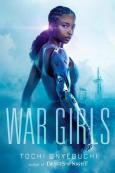
Nigeria in 2172 is racked with a bloody, nuclear war brought on by climate change and a shortage of resources. After becoming separated, sisters Onyii and Ify must rely on their different skillsets to reunite—and fight for a peaceful existence. Tochi Onyebuchi crafts themes of family, racial tension, and humanity into this dystopian YA tale. Based on the Nigerian Civil War, War Girls is a suspense-filled story with a surprising conclusion.
If you enjoyed this list on mind bending fiction by black authors, be sure to check out the rest of our Sci-Fi contenct at The Ritual.
FacebookTwitterInstagramLinkedInGoodreads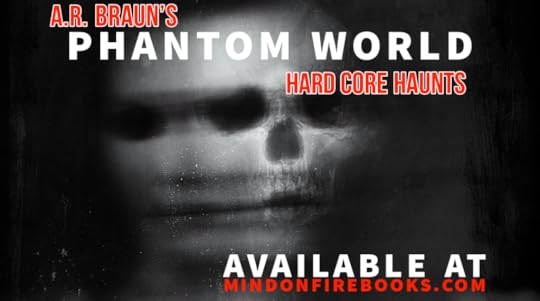 Phantom World by A.R. Braun
Phantom World by A.R. BraunThere are elements of Clive Barker in the telling of these 8 macabre tales, with brutal frankness, and anger at the unjust nature of life, death, and a capricious god. The tales, like the judgments within, pass quickly and savagely. They are easy to read but linger afterward. An enjoyable collection for fans of the nastier side of horror.”
Purchase as a paperback on Amazon or Barnes and Noble.
Buy the eBook for only $4.99 below!
[ebook_store_buy ebook_id=”8002″]
Top 8 Books from Nicaragua on Politics
The Central American country of Nicaragua has a rich and varied political history that has been well-documented in a number of books over the years. From books that explore the relationship between the Sandinista government and the United States during the Nicaraguan Revolution to books that examine the current political landscape of this fascinating country, there is a wealth of knowledge to be found in the texts written by many prominent Nicaraguan authors. Here are the eight best books to read if you want to learn more about politics in Nicaragua.
Nicaraguan political books also provide insight into how Nicaragua’s past has shaped its present and future. By reading these books, readers can gain a better understanding of the country’s culture and its people. Moreover, these books are essential for anyone interested in learning more about Latin American politics in general.
1. The Children of Cain: Violence and the Violent in Latin America by Miguel d’Escoto Brockmann
This book, which was originally published in Spanish in 1996 and translated into English in 2003, is a powerful and thought-provoking examination of the cycle of violence that has characterized Latin American countries, including Nicaragua, since the Spanish conquest. The author, Miguel d’Escoto Brockmann, is a Nicaraguan diplomat, former minister of foreign affairs, and politician who uses his unique perspective to explore the complex interplay between political forces and the effects of violence on individuals and societies.
2. The Blue-Eyed Enemy: Nicaragua, the United States, and the Legacy of Reagan’s War against the Sandinistas by María McFarland Sánchez-MorenoThis book takes a comprehensive and critical look at the Reagan administration’s disastrous policies in Nicaragua, which brought about instability and suffering for the people of the country. The author, María McFarland Sánchez-Moreno, is an American journalist and the executive director of the Drug Policy Alliance, and her book examines the legacy of the Reagan-era policies in Nicaragua and the lasting effects they have had on the country.
Thank you for visiting with us. For more Literature related content, visit our blog at The Ritual.
3. A People’s History of the Sandinista Revolution by Vern MelhmanThis book is an in-depth exploration of the Sandinista Revolution, which overthrew the Somoza dictatorship in 1979. Written by Vern Melhman, a professor of Latin American and Caribbean history at the University of California, this book is a comprehensive look at the people, events, and ideas that shaped the revolution and brought about profound changes in Nicaraguan society.
4. Revolution in the Streets: The Story of Nicaragua’s FSLN by Marifeli Pérez-Stable
This book, written by Venezuelan-American author Marifeli Pérez-Stable, is a comprehensive examination of the Sandinista National Liberation Front (FSLN) and its impact on Nicaraguan politics. The author takes an in-depth look at the FSLN’s rise to power, its ideological and political influences, and the revolutionary changes that it made to the country.
5. Sandinista: Carlos Fonseca and the Nicaraguan Revolution by Matilde ZimmermannThis book, written by Matilde Zimmermann and published in 2004, is a biography of Carlos Fonseca Amador, one of the founders of the Sandinista National Liberation Front. Zimmermann’s book is a thorough examination of Fonseca’s life and his role in the Nicaraguan Revolution and provides a unique insight into the dynamics of the conflict.
6. Revolution in Nicaragua: A People’s Triumph by Joaquín CuadraThis book, written in 1985 by Nicaraguan journalist Joaquín Cuadra, is a detailed account of the rise of the Sandinista movement and its eventual overthrow of the Somoza dictatorship. Cuadra was a part of the movement and his book provides an intimate portrayal of the conflict and the Sandinista victory.
FacebookTwitterInstagramLinkedInGoodreads7. Nicaragua: The Land of Sandino by Tomás BorgeThis book, written by Tomás Borge, explores Nicaragua’s history and culture from colonial times to the present day. Borge, one of the founding members of the Sandinista National Liberation Front, provides a unique view of the country’s history and its development over the years.
 Nicaragua has a long and rich history of literature that has played an important role in shaping the current state of politics in the country.
Nicaragua has a long and rich history of literature that has played an important role in shaping the current state of politics in the country.From novels to poetry, Nicaraguan authors have been writing about the social and political issues that affect their nation for centuries. In this paper, we will explore how these books have influenced the current politics in Nicaragua, including how they have shaped public opinion and contributed to the nation’s identity. We will also discuss how these works can be used to understand the current state of politics in Nicaragua and what implications they may have for future generations.
Let’s Read!
We promise not to spam you or share your information with unwanted users. You may unsubscribe at any time.
Processing… Success! You're on the list. Whoops! There was an error and we couldn't process your subscription. Please reload the page and try again.—
February 7, 2023
Dog in Bed – Creative Poetry From Joyce Sidman
A poem by JOYCE SIDMAN
Nose tucked under tail,
you are a warm, furred planet
centered in my bed.
All night I orbit, tangle-limbed,
in the slim space
allotted to me.
If I accidentally
bump you from sleep,
you shift, groan,
drape your chin on my hip.
O, that languid, movie-star drape!
I can never resist it.
Digging my fingers into your fur,
kneading,
I wonder:
How do you dream?
What do you adore?
Why should your black silk ears
feel like happiness?
This is how it is with love.
Once invited,
it steps in gently,
circles twice,
and takes up as much space
as you will give it.
Poem copyright ©2003 by Joyce Sidman, whose most recent book of poems is Swirl by Swirl: Spirals in Nature, Houghton Mifflin Books for Children, 2011. Poem reprinted from The World According to Dog, Houghton Mifflin, 2003, by permission of Joyce Sidman and the publisher.
FacebookTwitterInstagramLinkedInGoodreadsFebruary 6, 2023
The Fantastic Fear in Black History Fiction
In observance of Black History month, Willy Martinez brings to life the first Fantastic work of fiction written by a colored American. The text is Sutton E. Griggs’s novel, Imperim in Imperio, published in 1899.
Imperium in Imperio: Self-published in 1899 and sold door-to-door by the author, this classic Black-American novel—a gripping exploration of oppression, miscegenation, exploitation, and black empowerment—was a major bestseller in its day. The dramatic story of a conciliatory black man and a mulatto nationalist who grow up in a racist America and are driven to join a radical movement dedicated to the creation of an all-black nation in Texas, Imperium in Imperio had a profound influence on the development of black nationalism.
Sutton E. Griggs’s novel, Imperim in Imperio is different from other economic novels in that it doesn’t exactly fit in as a sentimental novel, a realist piece, or a utopian fiction. Imperium in Imperio should be viewed as fiction that falls under the genre of the “fantastic,” as French literary critic, Tzvetan Todorov has described and demarcated in his work, The Fantastic: A Structural Approach to a Literary Genre. I will argue that writing a work that falls into the fantastic realm has been developed out of a natural response or need to overcome the harsh realities of the reconstruction period, as well presenting a different vision of the supernatural that was expressed via white American gothic tropes.
While other white American writers were applying traditional fear and gothic tropes to their stories, Griggs had to present a work that would help his readers overcome their fears, and by doing so, Griggs created a work of fantastic literature. Imperium in Imperio has transcended to a fantastic piece of fiction out of survival in a sense.
As the discussion regarding Griggs work is becoming more popular and more of his works are uncovered and redefined for a modern audience, this essay will solely focus on Imperium in Imperio and how it completes the three conditions prescribed by Todorov to be considered a work in the fantastic.

As prescribed by Todorov, the fantastic requires the success of three conditions:
First, the text must oblige the reader to consider the world of the characters as a world of living persons and to hesitate between a natural and a supernatural explanation of the events described. Second, this hesitation may also be experienced by a character; thus the reader’s role is so to speak entrusted to a character, and at the same time the hesitation is represented, it becomes one of the themes of the work… Third, the reader must adopt a certain attitude with regard to the text: he will reject allegorical as well as “poetic” interpretations. The first and the third actually constitute the genre; the second may not be fulfilled. (Todorov 33)
Ultimately, what we are looking for is not the supernatural or only the instances in which the traditional gothic tropes are challenged. As Todorov writes, “we might indeed characterize such events as supernatural, but the supernatural, though a literary category, is no relevant here” (Todorov 34). We want to find the crux – not between real and the supernatural, but in which “the hesitation occurs between the real and the imaginary” (Todorov 36).
A caveat to the fantastic is that it may “evaporate at any moment” because once the reader makes a decision, the effect has worn off. This is important to note because there are many stories where there are scenes of uncertainty or the imaginary- this may be common in any genre. The emphasis in the defense of a true fantastic literature is that the work enforces and keeps the effects of blending between the imaginary and the real throughout the whole fiction, not just in certain scenes.
Why the fantastic though, and what relevancy does that genre have with American writers? In Theorizing the American Fantastic and the American Grotesque, Ib Johansen points out how the American fantastic is being noticed in Europe and our international readers note that “the birth of the nation (USA) incidentally coincided with the rise of fantastic fiction on the literary scene”, and how Europe was only marginally interested in the fantastic – it was the Americans who were fascinated with it (7).
If you are enjoying this article, you may also liketo read The Heart Wrenching Auditory Horror in Radcliffe’s Fiction.
Some other writers of the fantastic in early American literature would be Edgar Allan Poe, Melville, Hawthorne, Ambrose Bierce, and Henry James. In his introduction to his collection of essays, American Nightmares: The Haunted House Formula in American Popular Fiction, Dale Bailey agrees with Johansen that “the American renaissance, which borrowed a series of conventions already extent in the European gothic and cast them into a uniquely American form” (15). Griggs is no exception – he too takes the gothic trope and reinvents them in Imperium.
Leaving other critics and debates on whether we consider the fantastic to be either a genre or a mode, this article will focus on identifying the art created in response to the socio-economic situation in the black south.
According to critic, Yemisi Jimoh, “very little consensus on key questions of periodization [have] been established either among participants in the New Negro Movement in literature or the literary and historical scholars who came after them,” identifying a lack in research regarding the art that was produced during this period as well (488). It is important to address this lack of research and emphasize its artistic importance because, as critic David Kramer has argued that imperium in Imperio was probably “circulated more widely among black readers that the fiction of Chestnut, Dunbar, and other more prominent African America Literary figures of the time” (4).
For Sure!
We promise not to spam you or share your information with unwanted users. You may unsubscribe at any time.
Processing… Success! You're on the list. Whoops! There was an error and we couldn't process your subscription. Please reload the page and try again.Pressing to say that Griggs could produce a fantastic fiction is not unlikely for a man who was a pioneer in other areas as well. He was a political activist, independent publisher, author, and is said to be the first black political writer who “wrote and spoke with great courage and wisdom about black dignity and suffering during the age of American Imperialism,” as introduced by Cornell West; so why not add to his accolades and give this writer credit as being one of the first black fantastic writers in the US (Griggs XV)? Now, I will unpack how Imperium lines up with this definition of the fantastic.
The first condition deals with the perception of events. When Todorov writes “to consider the world of the characters as a world of living persons,” he is saying that the story must fit in this world, in a world completely familiar and, plausible with the reader’s mind (33). The reader must feel as if the novel takes place in a valid reality to his/her belief, while at the same time, be presented with instances that challenge his reality. This reality check cannot be so far fetched that it casts the fiction into pure science fiction or fantasy, but just enough to cause hesitation in reading, and then bring back the reader to their comfort reality.
If you are enjoying this article, you may also liketo read The Two Greatest Shields In The Iliad Do Battle.
As Todorov points out, fear is usually present but not necessary for the fantastic. Imperium accomplishes the fantastic with and without fear. In addition to the horrific scenes with the doctor, we have more playful scenes which are also applied to derail the readers perspective. Johansen borrows a question from Thoreau’s magnum opus, Walden: “Could a greater miracle take place than for us to look through each other’s eyes for an instant”, which is the effect deployed in Imperium in Imperio to offset the traditional white reader’s center of gravity (Johansen 5).
The first example of this hesitation between this world and an alternative world in Imperium is illuminated with the first competitive speech in which Belton sets a trap for his teacher, Mr. Leonard. “During the last year Belton had dug a large hole running from the floor of the wood-shed to a point under the platform of the school room,” reads the paragraph leading the reader into the fantastic scene to come (28).
So, are we to assume that Belton had begun digging long before the contest, or that digging a tunnel under the school is even possible? This is the first instance in which any reader would hesitate. Interestingly though, we see this type of contraption – similar to the one that drops Mr. Leonard – in which a device is constructed to drop a character down at the end of the novel as Bernard is dropped down (127) The second device is even more of a spectacle as it includes a small parachute that descends into a stage of speculators, wrapped in a horse shoe, waiting for Bernard to drop down, either dead or alive.
9 Brilliant Video Games Inspired by Books
As readers, we have been introduced to a real world in the post- reconstruction South, however, the events and scenes lead us to question its reality. Speech contests are not uncommon, and we see how much effort and training has been put forth on preparing for the first speech contest between Bernard and Belton. That work and effort is relatable to a reader, but this work is then contrasted with the humor in which the fantastic elicits from Mr. Leonard’s fall into the water pit. In the end, Bernard descends into the Imperium where he found himself at the center of a spectacle, in a large room, “containing desks arranged in a semi0circular form,” where there were one hundred and forty five desks, “and at each a person was seated” (127).
We see this uncertainty or challenging of the expected perception again when Belton dresses up as a woman to find work up north.
In support of Griggs writing to derail the “traditional linguistic marker”, critic Fabi argues that Griggs is a craftsman of “effecting a dislocation of point of view (Fabi 118). Once more, the reader’s perceptions are challenged when Belton dresses up as a woman to find work up North and “bought a wig representing the hair on the head of a colored woman [and] an outfit of well-fitting dresses and other garments worn by women” Griggs 91-92).
While dressed as a colored woman, working as a nurse, Belton has many noxious advances made towards him by the young men he worked for. This adventure ends abruptly though. Berl Trout tells us of the young group of men’s “daring plan of kidnapping and overpowering Belton” but then ends that story to transition to the next paragraph, denying the reader the details of what transpired, or even how Belton was able to get away (93). The reader never gets closure and is left to his/her imagination and ambiguity.
When Griggs first introduces the “Huge Mississippian,” he describes him as “A student in Stow University who was noted for his immense height and for the size and scent of his feet. His feet perspired freely, summer and winter, and the smell was exceedingly offensive” (Griggs 52). His smelly feet cleared out rooms and the Mississippian used this to his advantage to be able to have his own room, and to be in silence when he didn’t desire company. This character causes distraction from the seriousness of an educational oration, and one that forces the reader to once again pause a minute, and attempt to place this large footed, southerner amongst the
The Disclosure Event: Flash Fiction Frenzy
already interesting cast of characters. The scene in which the Mississippian’s socks are used to embarrass Belton comes across as comical, yet unreal at the same time. Such antics would not be easy to gamble with, yet, Griggs gets away with placing this scene as a relief to the harsh reality of the oppressed negro, in this case, Belton.
Another device applied by Griggs to push the fantastic is to incorporate current events and sentiments into the novel itself. David Kramer unpacks this alignment in his article, “Imperium in Imperio: Sutton Grigg’s Imagined War of 1898.” Kramer lines up Grigg’s novel with actual events that took place in the US on the same dates identified in Imperium. In the article we learn that many blacks fought valiantly to help free Cuba, and that they were even praised by their officers. The returning blacks are revered as heroes by their own communities, however, the white Southerners are not appreciative of this fact and retaliate with negativity and race attacks. This is important to not e because the black community is distraught over these unfair judgements, and Griggs has included them in Imperium (Griggs 137). Mixing the current event of the time with the plot would add verisimilitude and add emotional attachment, making this world seem once again real, bringing the reader back to a safe zone.
Griggs responds to historical events such as the wars and battles in Cuba by reframing them within the lens of the characters Bernard and Belton. While in actual history, the US is debating a war with Spain in order to help liberate Cuba, the blacks of the Imperium are proclaiming war as well – just not against Spain, but against the United States (Kramer)!
Challenging the perception of events being interpreted by the reader, today’s reader would have to be filled in on some historical facts that occurred around the time that Imperium in Imperio: Sutton E. Griggs Imagined War of 1898.” One of the events highlighted in this novel that parallels reality was the war against Spain in which the US invaded Cuba, African American soldiers returned home to racism and discrimination.
OK
We promise not to spam you or share your information with unwanted users. You may unsubscribe at any time.
Processing… Success! You're on the list. Whoops! There was an error and we couldn't process your subscription. Please reload the page and try again.They hoped to return to decency and dignity but instead “the war precipitated a wave of mob violence against African Americans” (Kramer 3). Imperium was written “in the after math of the betrayal of the black Cuban war soldier and the upsurge of negrophobia in the wake of the Spanish war (Kramer 4).
The most pervasive and reality challenging idea this book postulates is the existence of a large secret society. But before the large Imperium could be formed, Belton experiments with a smaller collective group while attending Stowe University. Belton succeeds in perfecting “a secret
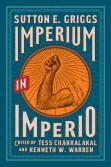
organization and hav[ing] a password” upon which was agreed upon as being “Equality of Death” (Griggs 44). This group of students formed to earn the rights of their black professor to be able to sit and eat equally with the white teachers. While this instance does not cause hesitation in the reader, it does set the reader up to be more welcoming to the larger collective that becomes the Imperium, consisting of approximately seven million members, with elected representation, and even a small trained military. The reader gets built up to ‘believe’ in this alternate world of secret societies, and the narrator of this tale, Berl Trout warns the reader to “[r]emember that this was Belton’s first taste of rebellion against the whites for the securing of rights denied simply because of color. In after life he is the moving, controlling, guiding spirit in one on a far larger scale; it need not come as a surprise” (Griggs 47).
For the readers of the era, when this was book was first published it would have a greater sentiment towards this notion as we learn in “Sutton Griggs and the Borderlands of Empire,” author Caroline Lavander makes the argument that it is clear to Griggs that blacks cannot prosper within the borders of the US. Lavander points out how in the late 1800’s and early 1900’s the border between Texas and Mexico was heavily contested and layered with diversity between Latinos, blacks and southern whites – and they all wanted to claim Texas as their own. Lavander also claims that Griggs was able to anticipate an uprising a decade before the Mexicans had a deal planned with Germany.
If you are enjoying this article, you may also liketo read The Two Greatest Shields In The Iliad Do Battle.
I wonder if Griggs anticipated it, or if his works actually instigated it? Ultimately, Griggs is said to have drawn upon “the area’s rich racial legacy in order to imagine a new answer to a key question occupying both black and white citizens of the US- where to place the nation’s newly freed black citizens” (61). Lavander then narrows from the macro view of the big Texan space, down to the micro spaces in Belton’s booby traps, tunnels and horrific near-death surgical scene. This history is “fantasticized” by Griggs as he does in fact mix current events of his time with the social movements written in Imperium in Imperio.
Author M. Giulia Fabi also discusses space in the South in her article, “Desegregating the Future: Sutton E. Griggs’ Pointing the Way and American Utopian Fiction in the Age of Jim Crow.” She argues that authors like Griggs wrote “works of speculative fiction in order to seize the literary and cultural power to articulate a restructuring of the very nation that was discriminating against them” – or in other words, writers of this time were writing to transform the space they are currently in, into their ideal environment (114).
Overcoming the gothic or traditional fear appeals is one of the literary tropes that this novel accomplishes in order to become fantastic. Griggs sets this up in the scene in which Dr. Zackland has the local Southern “nigger rulers,” capture Belton to kill him cleanly so that the doctor can study Belton’s body after death (104-107). Even though the hate group succeeds in capturing Belton and hanging him as the “rope was adjusted around his neck and thrown over the limb of a tree” with Belton swinging from it, they still fail in killing him. And this is where reality once more bleeds into the imaginary and vice versa.
After being hanged, the postmaster “fired his pistol at the base of [Belton’s] skull and the blood came oozing forth”, however, Belton survives this trauma. And not only does he survive this trauma, Belton’s painful adventure is compounded with being cut down from the tree and then being placed on an operating table in Dr. Zackland’s residence while still alive. “Belton had now returned to consciousness but kept his eyes closed, thinking it best to feign death. Dr. Zackland cut off the hair in the neighborhood of the wound in the rear of Belton’s head and began cutting the skin, trying to trace the bullet. [But] Belton did not wince” (106). Belton’s palm is then pricked even though the “pain was exceedingly excruciating; Belton showed no sign of feeling” (106). This horrific and gothic scene forces the reader to re evaluate the dimension that this novel takes place in, and ask how it is that Belton survives these hardships, and if it is even humanly possible?
Griggs sets up Belton’s perseverance in this scene to demonstrate to the New Negro narrative how to react in the face of adversity: have no fear, control your body – and in denying the element of fear, the supernatural event becomes fantastic to the reader. Afterall, we are identifying the elements that turn this piece of fiction into a work of the fantastic.
Shortly after Belton arrives in Cadeville, Louisiana to work as a teacher, he is immediately targeted by the village doctor for being a “fine specimen of physical manhood” as the doctor’s “eyes followed him cadaverously” (Griggs 99). This targeting of Belton foreshadows the threats to come that continue to cause hesitation in Belton. Belton learns about the “nigger rulers” and their history of terror and extortion. Unfortunately for Belton, he thinks he may be safe in the home of God as he is invited to a white church by the pastor, but quickly learns that he is not equal and “a crowd of men gathered around Belton and led him out of doors” (103). Even in the house of God, the colored man is not equal or even treated with sympathy.
9 Brilliant Video Games Inspired by Books
Although the second condition is not mandatory for a work of literature to be completed to be classified as a fantastic literature, I argue that this novel, does in fact accomplish this condition. The second condition being that “this hesitation may also be experienced by a character; thus the reader’s role is so to speak entrusted to a character, and at the same time the hesitation is represented, it becomes one of the themes of the work” (Todorov 33). The examples for this condition are fewer, but still noteworthy.
One of the greatest challenges or most emotional hesitations that the protagonist Belton must endure is the birth and development of his child. When the child is first born, Belton let out a “terrible shriek” and “dropped the lamp upon the floor and fled out of the house and rushed madly through the city” (Griggs 94). Out of shame of having a child that was born white, he leaves the city to dedicate himself to the Imperium.
Towards the end of the novel, when Belton returns home before he is to face his death sentence, he is reunited with his son (Griggs 171). Before Belton is reunited with his son, Berl Trout, catches up the reader by filling in some growth transitions in Belton’s son’s upbringing: “as the child grew, its mother noticed that it’s hair began to change. She also thought she discovered his skin growing darker by degrees. As his features developed, he was seen to be the very image of Belton. Antoinette frequently went out with him and the people began to shake their heads in doubt” (Griggs 170-171). Even the characters in this novel hesitate as the race of Belton’s child that seems to change as he grows. This child isn’t even referred to as a ‘he’, the child is referred to as an ‘it’ and ‘it’s’ mother was Antoinette, wife of Belton (170).

Another adventure in which one of our heroes, Belton, is distraught between this world and the imaginary occurs in chapter XII. In this section, Belton travels from Texas, to Cadeville, Louisiana for a teaching position at Stowe University. During his trip Belton gets arrested and he even verbalizes his hesitation in his location, “wondering what kind of country he had entered” (Griggs 98). Belton is clearly hesitating in his own fictional reality as a character. Leading up to this reflection, Belton had been thrown off of a moving train, and then got kicked out of a restaurant simply for being colored (96-98). When Belton travels back to the South, he experiences a new South, one that falls in line with the fantastic as Bernard Terramorsi writes in “Le Mauvais reve americain: les origins du fantastique et le fantastique des origins aux-unis” that the fantastic marks “the return to a savage topology, where space does not
open itself up to connections and to communication, but rather to a chaos consisting of displaced localities (Johansen 8). We see this savage topography in the shaming scenes in which Belton gets throw off the train, kicked out of the restaurant, gets arrested. All of these scenes that were common to Belton are now topsy-turvy with this new fantastic landscape of the reconstruction period. And of course, the most savage scenes occur when he travels through the South, from Texas to Louisiana.
“was this death?” is what Bernard thinks to himself after he descends into the Imperium after proving his loyalty to the negro movement towards the end of the book (127). He was dumbfounded as to his life, the reality of being surrounded by a room full of statesmen and desks, and even more hesitant about the existence of the Imperium. Bernard even offered a grace period in which he “took three months to examine into the reality and stability of the Imperium,” signifying a doubt in one of our protagonist’s reality (135). Naturally, Bernard wanted to investigate the validity of the existence of a secret society, “[a]nother government, complete in every detail, exercising the sovereign right of life and death over its subjects… organized and maintained within the United States” (129). This secret society not only challenges the reader’s perception of reality, but also the perception of one of the main characters.
If you are enjoying this article, you may also liketo read The Heart Wrenching Auditory Horror in Radcliffe’s Fiction.
The third condition of the fantastic is concerned with a choice between several modes (and levels) of reading (Todorov 34). Remembering that the “reader must adopt a certain attitude with the text: he will reject allegorical as well as “poetic” interpretations”, this paper will not take a look at how Imperium in Imperio fulfills this condition (33).
To fulfill this condition, the two stylistic devices deployed by a writer in the fantastic would be to use imperfect tense and modalization to cause uncertainty or hesitation in the reader’s experience, with the effect being best applied together to maximize the effect – which in this case is to cause ambiguity in the reader’s perception. This condition is linked to the syntactical or the semantic (Todorov 33). Accomplishing this effect furthers the hesitation in the fantastic because it causes the reader to have to re-orient themselves with the text (Todorov 38).
Mr. Leonard, the teacher for our protagonists during their upbringing, returns as an important player that will once again, fantastically propel Belton to the forefront, because of his mixed blood (65-67). Mr. Leonard gets reintroduced to the novel with a letter addressed to Belton, sent by Belton’s father. But this letter does not only tie the past with the present, it
is also, a touch of the marvelous is applied as Belton’s father discloses that Mr. Leonard served alongside Belton’s father during the war, and the two had contractual deal, holding crippling secrets which could ruin either one or the other’s lives. They made a pact to disclose one another’s secret – Belton’s father had a black wife, and Mr. Leonard had killed his own commanding officer. What’s derailing or pushing the limits of reality gets disclosed as well:

“[h]e informed me as to how my secret came into his possession. Soon after he committed his crime he felt sure that I was in possession of his secret, and he thought to steal into my tent and murder me. He stole in there one night to perpetrate the crime. I was talking in my sleep. In my slumber I told the story of my secret marriage in such circumstantial detail that it impressed him as being true” (Griggs 66).
The murderer decides against murder because he learns of a secret from his enemies pillow talk? This is very similar to what one might read ina childs book of fables. What’s even more perplexing is that this story comes via a letter, written to Bernard from his distanced father… and the story is told via the interpretation of the narrator, Berl Trout.
Another device used in causing hesitation or forcing a conscious division is the play of similar characters. Both brothers have names that begin with the letter “B”, they both were brought up in the same school; both have pasts attached to the former past and realize the future; both are grand orators. All these similar, yet different distinctions, force the reader to have to consciously hesitate between both characters. One chapter will cover the tracks of Belton’s misfortunes, and then the following chapter will cover Bernard’s helping hand from his political connections; the only distinction between these characters are skin tone and outside influences. But even with external influences, both characters end up being able to attend college because of their white benefactors. Blending skin tones, education, shameful experiences, and influence in Imperio was crafted intentionally by Griggs, in effort to impact his reader’s perceptions of which character is who, adding to the readers hesitation.
The Fantastic Genre: The Best Fiction
Critic Fabi notes Griggs’ utopia differs from the mainstream utopian fiction because of the “estrangement effect that results from moving African Americans from the margin to the center of a utopian planning” within a “tradition that systematically excluded blacks from visions of a better life” (114). This challenge or perspective shift from the traditional
white man’s voice is already asking the reader to have doubt in simply the fact that it was unheard of. Even more unheard of was an educated, well spoken society of black men. This was a reality the country was experiencing at the time, so the emotions were intensely fresh in the minds of Griggs’ intended readers, further pushing hesitation or casting doubt.
Nonetheless, the new negro is asking to be a character in the American dream, or, the American utopia; this asserts acceptance into the imaginary realm of all Americans, further making this a work of the fantastic for its time.
One of the challenges to creating fantastic fiction is that it may evaporate at any moment because oce the reader makes a decision, the effect of the uncertainty is gone. There are many pieces of fiction that have scenes that are fantastic, but rarely do we see a novel in which it can be a complete fantastic piece of work, such as Imperium in Imperio. Volleying off of Lavander’s claim that Grigg’s work “has become a significant object of study, especially for its commentary on race relations in an imperializing late-nineteenth-century US,” I too believe that Grigg’s Imperium in Imperio is a significant work – but not simply because of commentary – as I have demonstrated here, but also because of how Griggs applies his fantastic fiction as a vehicle to strengthen the new negro for an intellectual coup d’é·tat. Critic Fabi also writes of Griggs that his project in this novel “of social change rests precisely in the ideological and existential shift from the paralysis of despair to action and hope” (120). This ‘hope’ for the New Negro is what was begat out of Griggs’ fantastic fiction for his readers. Imperium in Imperio is a quality fantastic work because it blends the imaginary, the uncertain, gothic tropes, and hesitation of reality throughout the whole work.
The harsh reality of racism in the South is the real horror and harder to believe that such hatred exists, as opposed to surviving a gunshot wound to the head as was talked about in this chapter. The suspense or repelling of reality with the uncertainty is the relief the reader needs so that Imperium in Imperio does not come off as a complete tragedy. It is in a sense a watered down reality or a filtered truth for readers of all ages/races to be able to enjoy and reflect on constructively, rather than simply have a feeling of sorrow or terror.
For Todorov, this novel would be a true piece of fantastic as it requests a perpetual hesitation of interpretation from its readers. Adding Imperium in Imperio to the canon of the fantastic, alongside other great American writers – Poe, Bierce, Melville – would also thrust Griggs forward as a pioneer as the first black fantastic writer.
Sure

We promise not to spam you or share your information with unwanted users. You may unsubscribe at any time.
Processing… Success! You're on the list. Whoops! There was an error and we couldn't process your subscription. Please reload the page and try again.The post The Fantastic Fear in Black History Fiction appeared first on Mind on Fire Books.



